
Article Summary: North Carolina Landmarks
North Carolina Landmarks. More Than Just Parks has 15 incredible must-see sites for you to visit.
There’s so much more to this exciting place than the North Carolina Tar Heels. In this article, we’ll familiarize you with the incredible landmarks located in the Tar Heel State.
We’ve got incredible places, iconic memorials, fascinating museums, epic monuments and so much more.
We’re going to give you our list of the Top 15 Landmarks In North Carolina.
So, What Is A Landmark?
Well, it’s a place of “a special character or special historical or aesthetic interest or value as part of the development, heritage, or cultural characteristics of a city, state, or nation.”
Why visit these places? Because landmarks connect us to the past. Through visiting these wonderful places where history occurred we find our roots. It allows us to feel like we are a part of something much bigger than ourselves.
And, speaking of history, did I mention that I taught the subject? I spent a lifetime teaching about the history behind many of these amazing sites. Then I got to see them firsthand. And now I’m sharing the fascinating stories of these places with you. It doesn’t get any better than that!
So, without further ado, let’s dive in.
Table of Contents: North Carolina Landmarks
North Carolina Landmarks
Some Fascinating Facts About North Carolina
Here are some fascinating facts about North Carolina:
- Nickname: North Carolina is often referred to as the “Tar Heel State” due to its history of producing tar, pitch, and turpentine from its extensive pine forests. The nickname was further popularized during the Civil War when North Carolina soldiers displayed great courage and tenacity, comparing them to “tar heels.”
- First in Flight: North Carolina is home to the Wright Brothers National Memorial in Kill Devil Hills, where Orville and Wilbur Wright made their first successful powered flight on December 17, 1903. This achievement marked a significant milestone in aviation history.
- Natural Beauty: North Carolina boasts a diverse landscape, from the majestic Great Smoky Mountains in the western part of the state to the beautiful Outer Banks along its coast. It is also home to numerous picturesque lakes, waterfalls, and scenic drives, making it a haven for nature lovers.
- Research Triangle Park: Located near Raleigh, Durham, and Chapel Hill, Research Triangle Park (RTP) is one of the largest research parks in the world. It houses numerous high-tech companies, research institutions, and educational facilities, making it a hub of innovation and scientific advancements.
- NASCAR Origins: North Carolina has deep roots in stock car racing and is considered the birthplace of NASCAR (National Association for Stock Car Auto Racing). The sport gained popularity in the region in the 1940s and 1950s, and the first NASCAR race was held in Charlotte in 1949.
- Barbecue Capital: North Carolina is renowned for its barbecue, but it has two distinct styles. The eastern part of the state favors a vinegar-based sauce, while the western part leans towards a tomato-based sauce. Both styles have their devoted fans, and debates about which is superior can get quite passionate.
- Biltmore Estate: Asheville is home to the impressive Biltmore Estate, a grand mansion built by George Vanderbilt II in the late 19th century. It is the largest privately-owned house in the United States, boasting 250 rooms, extensive gardens, and a winery. It remains a popular tourist attraction.
- Seaside Gems: North Carolina’s Outer Banks stretch along its coastline and offer a treasure trove of history and natural wonders. The area is famous for its lighthouses, including the Cape Hatteras Lighthouse, which is the tallest brick lighthouse in the United States.
- Cherokee Heritage: The Eastern Band of Cherokee Indians resides in North Carolina and has a rich cultural heritage. The Qualla Boundary, located near the Great Smoky Mountains National Park, serves as their tribal land. Visitors can explore their traditions, history, and crafts in various museums and attractions.

Top 15 North Carolina Landmarks
15. Tryon Palace
More Than Just Parks kicks off our list of the Top 15 North Carolina Landmarks. We’ve got the best of the best. Coming in at #15 is Tryon Palace.
Tryon Palace is a historic landmark located in New Bern, North Carolina. It served as the first permanent capital of the colony of North Carolina in the late 18th century. The history of Tryon Palace dates back to the colonial era and encompasses the rise and fall of a significant political and cultural center.
The palace was named after Governor William Tryon, who played a crucial role in its establishment. In 1767, Governor Tryon proposed the construction of a grand residence that would also serve as the official residence of the colonial governor. The construction of the palace began in 1767 and was completed in 1770.
Tryon Palace was an imposing structure designed in the Georgian architectural style, with a two-story central block and flanking one-story wings. It featured grand rooms, including an opulent ballroom, a council chamber, and the governor’s private quarters. The palace’s architecture and furnishings were meant to convey the authority and influence of the colonial government.

Tryon Palace, North Carolina’s First Colonial Capital, New Bern | Courtesy of Wikimedia Commons
A Political & Social Hub
The palace quickly became the political and social hub of the colony, hosting extravagant balls, formal receptions, and important political gatherings. It witnessed significant events such as the convening of the colonial assembly and the signing of the Tryon Resolves in 1774, a precursor to the Declaration of Independence.
However, the palace’s role as the capital and the governor’s residence was short-lived. In 1789, the state capital was moved to Raleigh, and Tryon Palace was abandoned. Tragically, in 1798, the palace was destroyed by a fire, leaving only the brick foundation and ruins.
For over 150 years, the palace’s remnants lay neglected until the mid-20th century when the Tryon Palace Commission was established with the goal of reconstructing the historic site. The commission embarked on an extensive archaeological and historical research project to accurately recreate the palace and its grounds.
Things To Do At Tryon Palace
- Take a palace tour: The Palace is the centerpiece of the site and has been restored to its 18th-century appearance. Visitors can take a guided tour of the palace and learn about its history and the people who lived there.
- Visit the gardens: The Palace gardens are beautiful and feature a wide variety of plants and flowers. Visitors can take a leisurely stroll through the gardens or attend one of the many garden-related events.
- Attend a special event: Tryon Palace hosts a variety of special events throughout the year, including historical reenactments, concerts, and festivals. Check the calendar of events to see what’s happening during your visit.
- Explore the North Carolina History Center: The History Center is a modern building that houses exhibits on North Carolina’s history, including the Native American history, the colonial period, and the Civil War. It also has interactive exhibits, a 3D movie theater, and a museum shop.
- Take a carriage ride: Visitors can take a horse-drawn carriage ride through the historic district and learn about the history of New Bern.
- Attend a workshop or class: Tryon Palace offers a variety of workshops and classes on topics such as gardening, cooking, and crafts. These classes are a great way to learn a new skill or deepen your knowledge of a particular subject.
- Visit the historic buildings: In addition to the Palace, the site also includes several other historic buildings, including the Stanly House, the Dixon House, and the New Bern Academy. Visitors can take guided tours of these buildings and learn about their history.
- Take a riverboat tour: Visitors can take a scenic riverboat tour along the Trent River and learn about the history and ecology of the area.

Interior of Tryon Palace | Courtesy of Wikimedia Commons
14. Reed Gold Mine
Our next North Carolina landmark has a truly fascinating history. It’s the site of the first documented gold find in the United States. From this discovery, gold mining spread gradually to nearby counties and eventually into other southern states. During its peak years gold mining was second only to farming in the number of North Carolinians it employed.
At #14 on our list of the Best North Carolina Landmarks is Reed Gold Mine.
The story of Reed Gold Mine dates back to 1799 when a young boy named Conrad Reed found a large yellow rock while playing in Little Meadow Creek. Unaware of its value, Conrad’s family used the rock as a doorstop for several years. In 1802, Conrad’s father, John Reed, took the rock to a jeweler in Fayetteville, who recognized it as a substantial gold nugget.
Word quickly spread about the discovery, leading to a surge of interest in the region. John Reed established a small mining operation on his property, and other local farmers and prospectors began to search for gold in the nearby creeks and rivers. This marked the beginning of the North Carolina Gold Rush.
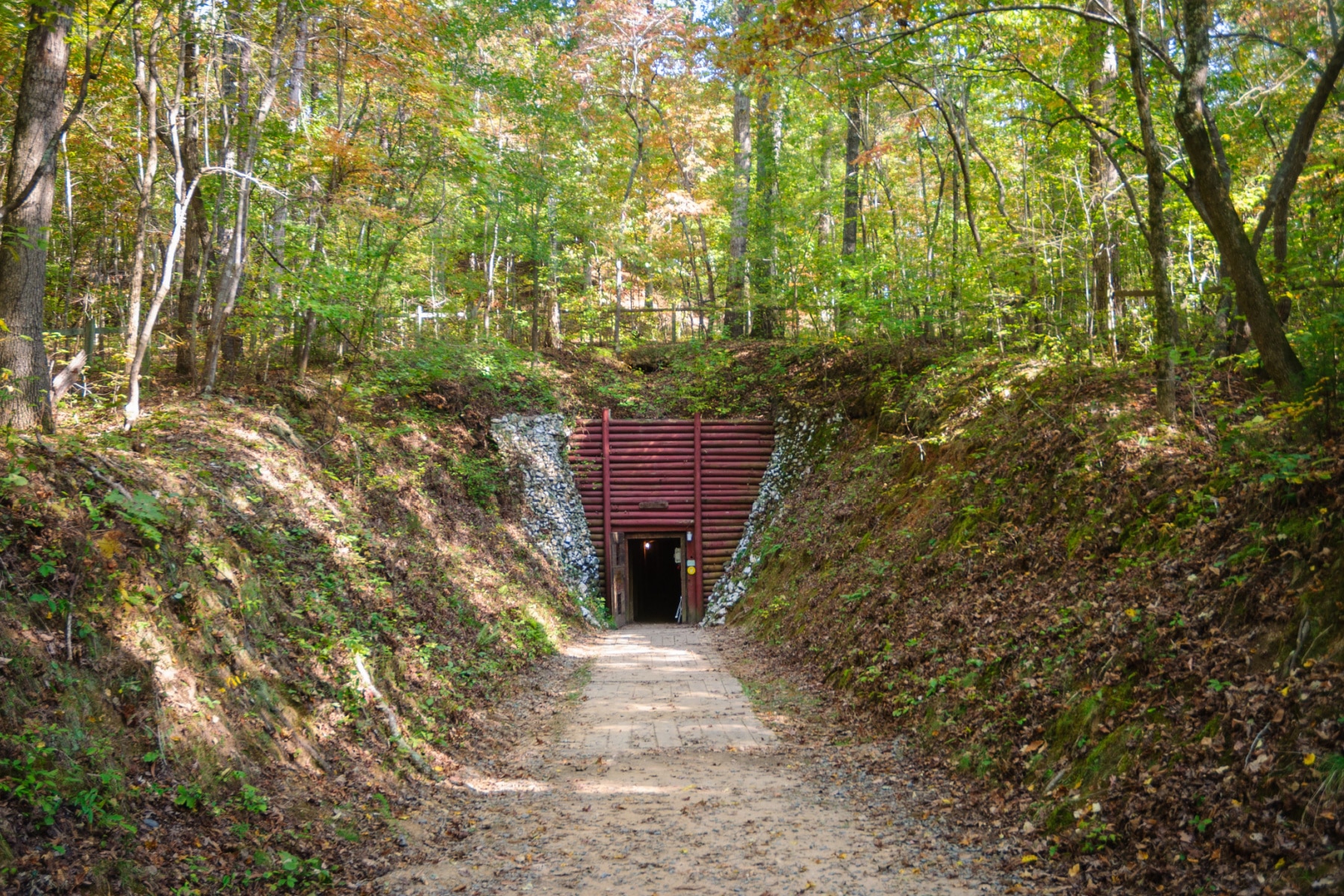
It Became A Bustling Mining Community
As news of the gold spread, the area around Reed’s property became a bustling mining community known as Reed’s Gold Mine. It attracted prospectors from all over, and by the early 1800s, the mine was producing significant amounts of gold. In 1803, a 17-pound gold nugget was found, adding to the excitement and further fueling the rush.
The success of Reed’s Gold Mine contributed to the growth and prosperity of the region. Miners used simple placer mining techniques, such as panning and sluicing, to extract gold from the riverbeds and streams. The mining operations expanded, and by 1824, a stamp mill was built to crush ore and extract gold using more advanced techniques.
In the mid-1830s, as the easily accessible gold deposits were exhausted, the production at Reed Gold Mine declined. Many miners moved westward in search of new opportunities during the California Gold Rush of 1849. Despite the decline, gold mining continued in the area, albeit on a smaller scale.
From Gold Mine To Historic Site
Reed Gold Mine gained national attention in the late 19th century when it was acquired by investors from the Reed Gold Mining Company. They constructed a new mill and resumed mining operations, utilizing more efficient technologies. The mine operated intermittently until 1912 when it closed due to falling gold prices and logistical challenges.
In 1971, Reed Gold Mine was acquired by the state of North Carolina and became a state historic site. Today, visitors can explore the mine and its surrounding area, learning about the history of gold mining in North Carolina. The site features a visitor center, underground tunnels, exhibits on mining techniques, and a reconstructed stamp mill. Visitors can also try their hand at gold panning and experience the thrill of finding gold flecks in the streams.
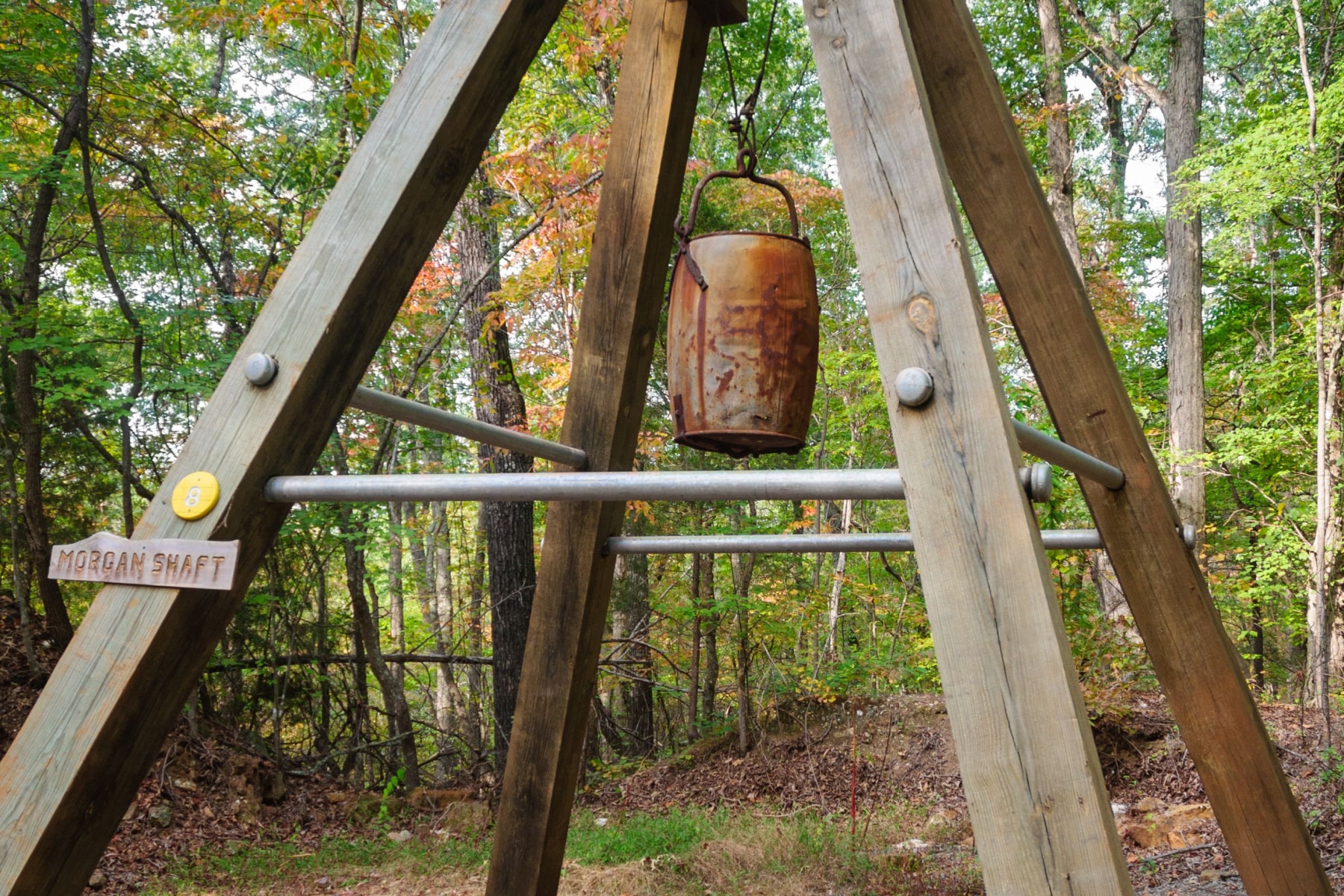
13. Fort Fisher
Our next North Carolina landmark was a Confederate fort during the Civil War. At #13 on our list of the Best North Carolina Landmarks is Fort Fisher.
Construction of Fort Fisher began in 1861 in response to the Union’s blockade of the southern coast. Designed by Confederate engineer Colonel William Lamb, the fort was strategically positioned on a narrow peninsula between the Atlantic Ocean and the Cape Fear River. It featured a series of earthen fortifications, bombproof shelters, artillery emplacements, and a network of trenches and palisades.
Fort Fisher’s primary objective was to prevent Union naval forces from reaching Wilmington, which served as a vital supply hub for the Confederacy. The fort successfully deterred several Union attempts to capture Wilmington, earning a reputation as the “Gibraltar of the South.”
Fort Fisher During The Civil War
In December 1864, a major assault was launched by Union forces in an attempt to seize Fort Fisher and close the last major Confederate port on the Atlantic coast. Led by General Benjamin F. Butler and Rear Admiral David D. Porter, the Union troops carried out a massive bombardment of the fort, but their ground assault was repelled by the Confederate defenders.
Recognizing the need for a more coordinated and stronger attack, Union forces returned in January 1865 under the command of General Alfred Terry. This time, a combined assault by land and sea was planned. The Union navy bombarded Fort Fisher for two days, while a force of over 9,000 troops advanced on the fort.
On January 15, 1865, the Union troops successfully breached the Confederate defenses, overwhelming the defenders and forcing their surrender. The fall of Fort Fisher sealed the fate of Wilmington and dealt a severe blow to the Confederate war effort by severely hindering their ability to receive supplies.
The capture of Fort Fisher marked a turning point in the Civil War, as it effectively closed the last significant Confederate port. The Union’s victory at Fort Fisher was a crucial step towards the eventual collapse of the Confederacy.
After its capture, Fort Fisher was occupied by Union forces, who expanded and fortified the fort to prevent any potential Confederate counterattacks. It remained an active military installation until the end of the war in 1865.
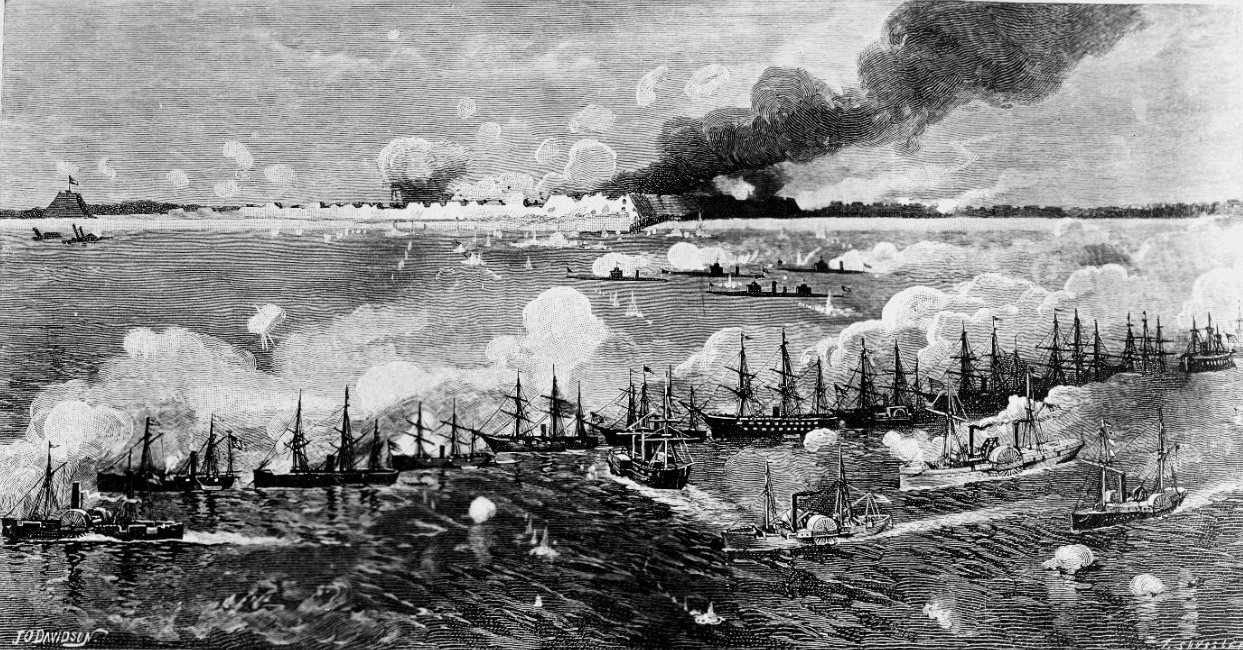
Fort Fisher Today
Fort Fisher in North Carolina offers a variety of activities and attractions for visitors. Here are some things you can do at Fort Fisher:
- Explore the Fort: Start by exploring the historic Fort Fisher itself, which played a significant role in the American Civil War. Take a self-guided tour or join a guided tour to learn about its history and see the well-preserved earthworks and remains of the fort.
- Visit the Fort Fisher State Historic Site: The Fort Fisher State Historic Site encompasses the fort and provides educational exhibits and displays about its history. You can learn about the battles fought there, the daily lives of soldiers, and the impact of the fort on the Civil War.
- Enjoy the Fort Fisher State Recreation Area: This beautiful coastal area offers stunning beaches and dunes. You can relax on the beach, swim, sunbathe, or take a leisurely stroll along the shore. The recreation area also has picnic areas, nature trails, and opportunities for birdwatching and fishing.
- Explore the North Carolina Aquarium at Fort Fisher: Located nearby, the North Carolina Aquarium at Fort Fisher is a popular attraction. Discover a variety of marine life, including sharks, stingrays, sea turtles, and colorful fish. The aquarium offers interactive exhibits, educational programs, and even the chance to touch some of the marine animals.
- Take a ferry to Southport: From the Fort Fisher area, you can catch a ferry that crosses the Cape Fear River to the charming town of Southport. Explore the historic downtown area, visit local shops and art galleries, enjoy waterfront dining, and take in the scenic views.
- Try fishing and boating: Fort Fisher is a great spot for fishing enthusiasts. You can cast your line from the shore or head out on a fishing charter to try your luck in deeper waters. Boating is also popular, and you can rent kayaks or paddleboards to explore the nearby waterways.
- Attend events and programs: Check the schedule for any special events or programs taking place at Fort Fisher. They often host educational programs, living history events, reenactments, and nature walks that provide unique insights into the history and ecology of the area.

12. Charlotte Hawkins Brown Museum
Our next North Carolina landmark celebrates a place where the lives of more than 2,000 African American students were transformed. Today, it provides the setting where visitors can explore this unique environment where boys and girls lived and learned during the greater part of the 20th century.
At #12 on our list of the Best North Carolina Landmarks is the Charlotte Hawkins Brown Museum.
The Charlotte Hawkins Brown Museum is located in Sedalia, North Carolina, and holds significant historical and cultural importance. It was named after Dr. Charlotte Hawkins Brown, an influential African American educator and activist who dedicated her life to promoting education and equality for African Americans.
The museum is situated on the former grounds of the Palmer Memorial Institute, a school founded in 1902 by Dr. Brown. The school was established to provide quality education to African American students during a time when opportunities for black education were limited. Dr. Brown believed that education was the key to empowerment and aimed to provide her students with an education that would prepare them for success in life.
Dr. Brown Transformed The Lives Of Her Students
Under Dr. Brown’s leadership, the Palmer Memorial Institute grew in both size and reputation. The school provided a rigorous academic curriculum along with vocational training in areas such as agriculture, home economics, and mechanical arts. Students came from all over the United States to attend the institute, which became known for its high standards and achievements.
Dr. Brown not only focused on academic excellence but also instilled in her students a strong sense of self-worth, pride in their heritage, and a commitment to social justice. She advocated for equal rights and fought against racial discrimination throughout her career. Her efforts made a lasting impact on the lives of her students and the wider community.
After Dr. Brown’s death in 1961, the Palmer Memorial Institute faced financial challenges and eventually closed its doors in 1971. However, in recognition of Dr. Brown’s remarkable contributions to education and civil rights, the state of North Carolina acquired the property and established the Charlotte Hawkins Brown Museum in 1987.

A group of Dr. Brown’s students | Courtesy of Wikimedia Commons
Learn About The Incredible Legacy Of Charlotte Hawkins Brown
The museum preserves and celebrates the legacy of Dr. Brown and the Palmer Memorial Institute. Visitors can explore the historic campus, including the school’s buildings, residences, and grounds.
Exhibits showcase the achievements of Dr. Brown, highlight the experiences of former students, and provide insights into African American history and education in the early 20th century.
The Charlotte Hawkins Brown Museum continues to serve as a cultural and educational center, hosting programs, workshops, and events that promote understanding, diversity, and social justice. It stands as a testament to the transformative power of education and the indomitable spirit of Dr. Charlotte Hawkins Brown.

Modern photo of the exterior of Kimball Hall, built in 1927 it functioned as the dining hall for the Palmer Memorial Institute. | Courtesy of Wikimedia Commons
11. Thomas Wolfe Memorial
Our next North Carolina landmark has become one of literature’s most famous landmarks. At #11 on our list of the Best North Carolina Landmarks is the Thomas Wolfe Memorial.

Thomas Wolfe Memorial | Courtesy of Wikimedia Commons
Thomas Wolfe
Thomas Wolfe was an American novelist and playwright who was born on October 3, 1900, in Asheville, North Carolina, and died on September 15, 1938, in Baltimore, Maryland. He is best known for his semi-autobiographical novels, which often explored themes of memory, family, and the human experience.
Wolfe’s most famous work is his debut novel, “Look Homeward, Angel,” published in 1929. The novel draws heavily from Wolfe’s own life and his experiences growing up in Asheville. It portrays the fictional character Eugene Gant and his family, offering a vivid and sprawling depiction of their lives, struggles, and aspirations. “Look Homeward, Angel” is considered a classic of American literature and is often regarded as one of the finest examples of Southern Gothic literature.
In addition to “Look Homeward, Angel,” Wolfe’s other notable works include “Of Time and the River” (1935) and “The Web and the Rock” (1939), which were both posthumously published. These novels continue the exploration of Eugene Gant’s life and journey as he navigates relationships, art, and the complexities of existence.
Wolfe’s writing style was known for its lyrical prose, vivid descriptions, and expansive storytelling. His works often dealt with themes of identity, the passage of time, and the impact of the past on the present. Wolfe’s writing was highly autobiographical, drawing heavily from his own experiences and personal relationships.

Thomas Wolfe Memorial Asheville Type Writer | Courtesy of Wikimedia Commons
Things To Do At The Thomas Wolfe Memorial
Here are some things you can do when visiting the Thomas Wolfe Memorial:
- Explore the Historic Home: The memorial is housed in the childhood home of Thomas Wolfe, known as the Old Kentucky Home. Take a guided tour of the house to see the rooms and spaces where Wolfe lived and gained inspiration for his writing. The house has been preserved to reflect the time period when Wolfe resided there.
- Visit the Visitor Center: Start your visit at the Visitor Center, which provides information about Thomas Wolfe’s life and works. You can learn about his writing process, his literary achievements, and the impact he had on American literature. The center often hosts exhibits and displays related to Wolfe’s life and the literary world of the early 20th century.
- Attend Literary Events: The Thomas Wolfe Memorial frequently hosts literary events, book signings, and readings. Keep an eye on the calendar for any upcoming events that might align with your visit. These events can provide insights into Wolfe’s works, offer discussions on literature, and connect you with fellow literature enthusiasts.
- Enjoy the Surrounding Area: The Thomas Wolfe Memorial is located in downtown Asheville, which is known for its vibrant arts and culture scene. Take a stroll around the area and explore the numerous art galleries, boutique shops, and local restaurants. Asheville is also surrounded by the beautiful Blue Ridge Mountains, offering opportunities for hiking, scenic drives, and outdoor activities.
- Read Thomas Wolfe’s Works: Before or after your visit, dive into Thomas Wolfe’s literary works to gain a deeper appreciation for his writing. Start with his most famous novel, “Look Homeward, Angel,” and explore other works such as “You Can’t Go Home Again” and “The Web and the Rock.” Reading his novels can provide a richer understanding of his life and the themes he explored.
- Participate in Writing Workshops: The Thomas Wolfe Memorial occasionally offers writing workshops and seminars. If you have a passion for writing, consider participating in one of these workshops to learn more about the craft of writing and to draw inspiration from the spirit of Thomas Wolfe.
Top 10 North Carolina Landmarks
10. USS North Carolina Battleship Memorial
Whatever historical period appeals to you know that the friendly folks at More Than Just Parks are working to find something appealing. In that vein, let’s fast forward from a visionary educator to the most destructive conflict in World History.
At #10 on our list of the Best North Carolina Landmarks is the USS North Carolina.
The Battleship North Carolina is a historic landmark located in Wilmington, North Carolina, across the Cape Fear River from downtown. It is a retired battleship that saw action in World War II and is now permanently docked as a museum ship.
The ship is a National Historic Landmark and is open to the public for tours. Visitors can learn about the lives of the sailors who served on the ship during WWII, watch an introductory film, and tour the exhibit hall.
They also have the opportunity to explore up to nine levels of the ship, including the engine room, the gun decks, and the captain’s quarters.
Visitors can even pretend to steer the ship, start the engine, or fire one of the guns, providing an interactive and educational experience for visitors of all ages.
It’s an excellent opportunity to step back in time and learn about the history of the ship and its role in World War Two.

9. The International Civil Rights Center & Museum, Greensboro
From the bloodiest conflict in the history of the world to the struggle for civil rights & racial equality in America, our next historic site tells a very different story. At #9 on our list of the Best North Carolina Landmarks we have the International Civil Rights Center & Museum.
The International Civil Rights Center & Museum focuses on the history of the civil rights movement in the United States. The museum is housed in the historic F.W. Woolworth building, which was the site of the famous Greensboro sit-ins in 1960.
The museum tells the story of the civil rights movement through a series of interactive exhibits and displays.

Visitors Can Explore The History Of Segregation
Visitors can explore the history of segregation, the struggle for voting rights, and the ongoing fight for social justice. The museum features artifacts, photographs, and videos that document the events and people who played a role in the civil rights movement.
One of the most striking exhibits in the museum is the original lunch counter from the Woolworth building, where the sit-ins took place. Visitors can sit at the counter and experience what it was like to be a part of the sit-ins. Other exhibits include a replica of a jail cell and a recreated Freedom Rider bus.
The museum also offers educational programs for students and teachers, as well as community events and lectures. It is open to the public six days a week, and admission is charged.
The International Civil Rights Center & Museum is a powerful reminder of the struggles and triumphs of the civil rights movement, and a testament to the ongoing fight for equality and justice.

8. Overmountain Victory National Historic Trail
We’re on to the Top 8 Historic Sites In North Carolina and we’ve got some amazing sites left for you to explore. At #8 on our list is the Overmountain Victory National Historic Trail.
This site traces the route that was used by the Patriots during the Kings Mountain Battle of 1780.
The route is 330 miles and it goes through four states (Virginia, Tennessee, North and South Carolina).
You can explore this route by following a Commemorative Motor Route which uses existing state highways. It is marked with a distinctive trail logo and includes 87 miles of walkable pathways.
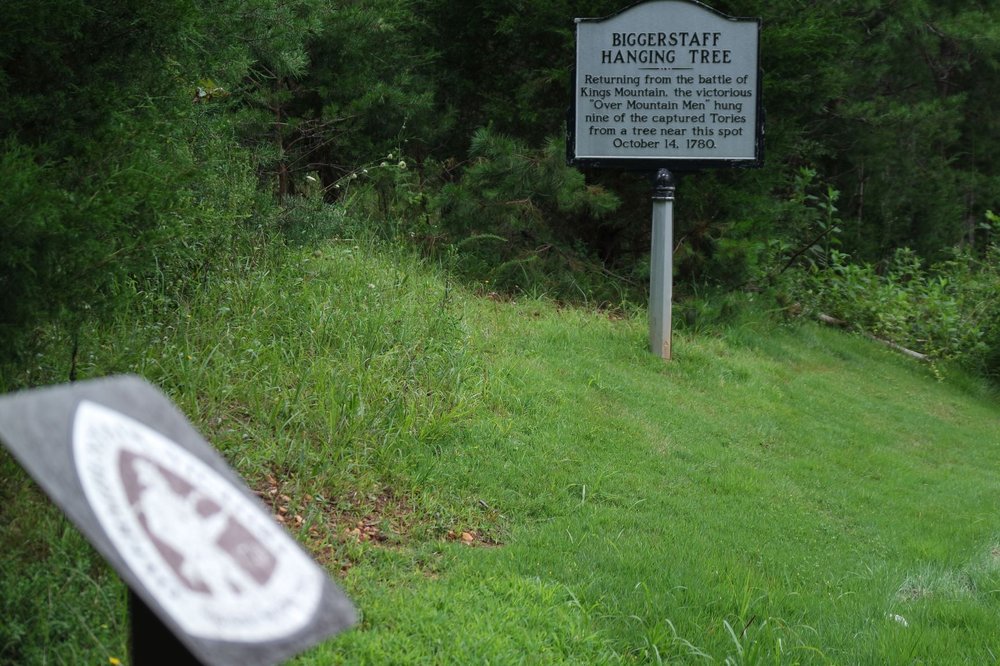
The Battle Of Kings Mountain
As a retired history teacher, I love to take a deeper dive into the history of these amazing places. In the case of the Battle of Kings Mountain, it actually pitted Patriots against Tories. No British soldiers participated as this was a fight strictly between those who wanted to break free of British rule versus those who didn’t.
A force of 1,800 backcountry or “Overmountain” men defeated a force of 1,000 Tories at King’s Mountain on October 7, 1780.
According to British commander Henry Clinton, the American victory “proved the first Link of a Chain of Evils that followed each other in regular succession until they at last ended in the total loss of America.”
“The turn of the tide of success.”
-Thomas Jefferson’s description of the battle of kings mountain
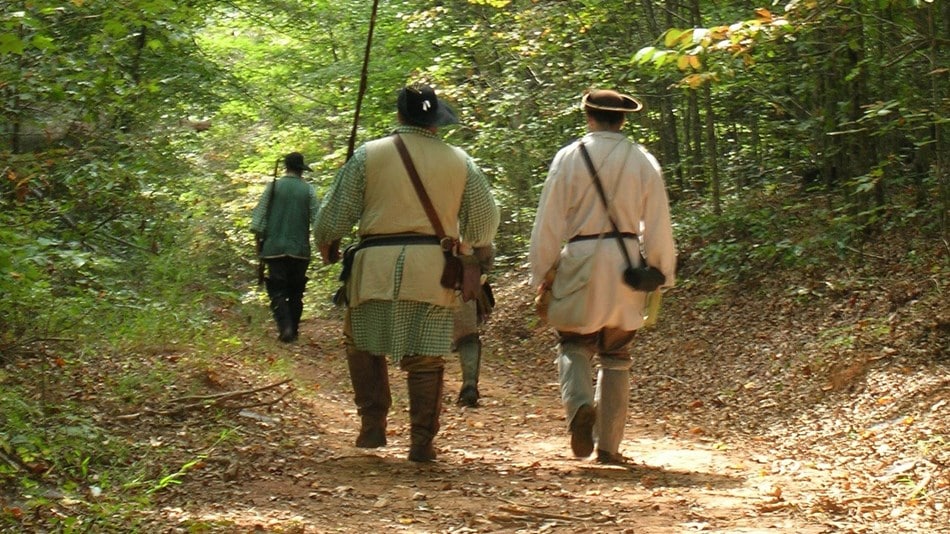
What You Can See In North Carolina | Overmountain Victory National Historic Trail
The following sites along the Overmountain Victory National Historic Trail are in North Carolina:
- Trail #308 & Road #5545 – Yellow Mtn. Gap, Avery Co. – 1.5 Miles
- Overmountain Victory NHT – Elkin, NC – 3.75 Miles
- Yadkin River Greenway – Wilkesboro, NC – 7 Miles
- Overmountain Victory NHT – W. Kerr Scott Dam & Reservoir – 11 Miles
- Yadkin River Greenway – Caldwell County, NC – 1 Mile
- Patterson School Overmountain Trail – Caldwell County – 1 Mile
- Gillespie Gap – Blue Ridge Parkway, NC – 5.75 Miles
- Rose Creek Trail – West Side of Blue Ridge Parkway, MP 326 – 1.4 Miles
- Black Bear Tract Trail – North Shore of Lake James – 2.1 Miles
- Trail #308G & Road #1238 – Pisgah National Forest – 4.1 Miles
- 1780 Community – North Shore of Lake James – 1 Mile
- Paddy’s Creek Trail – New Part of Lake James State Park – 2.3 Miles
- Overmountain Victory NHT – Lake James State Park – 1.5 Miles
- Catawba River Greenway – Morganton, NC – 5 Miles
- Overmountain Victory NHT – Rutherfordton, NC – 3 Miles
- Alexander’s Ford Trail – Polk Co., NC – 2 Miles
- Overmountain Vineyards – Polk Co., NC – 1 Mile (Source: NPS)
CHECK OUT: 10 BEST Revolutionary War Sites In America
7. Fort Raleigh National Historic Site
At #7 on our list of the Best North Carolina Landmarks we go back to the origins of America and examine an historic fort which was part of the settlement of the New World. It’s Fort Raleigh National Historic Site.
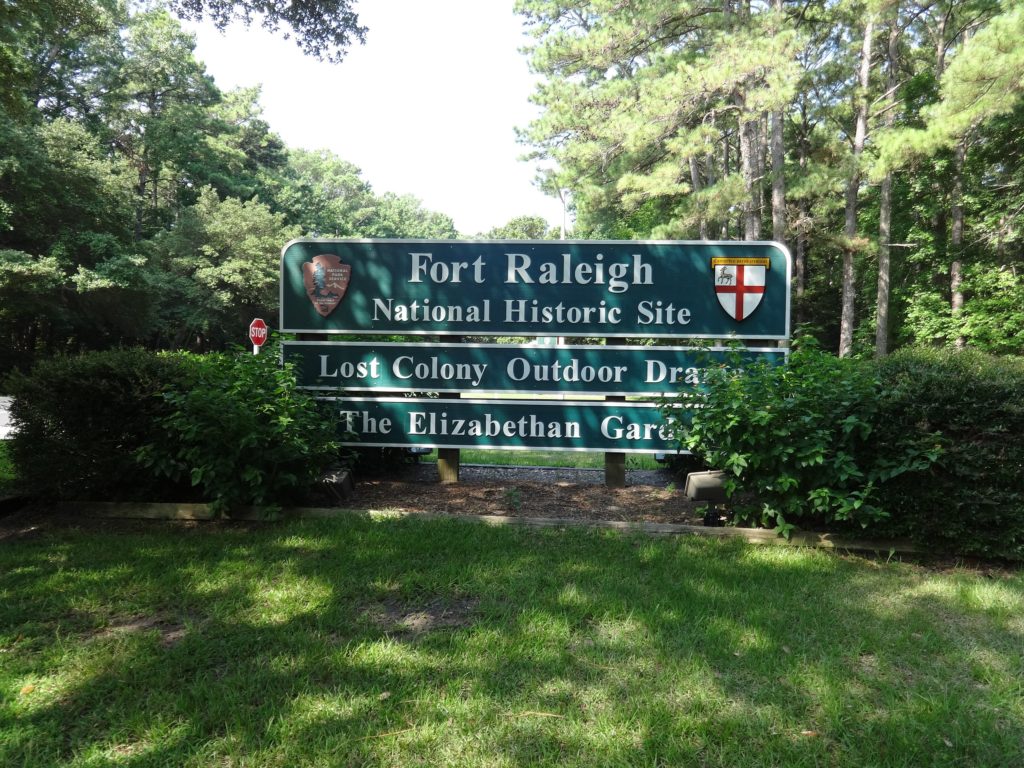
Things To See & Do At Fort Raleigh
At Fort Raleigh, you can learn the story of England’s first New World settlements from 1584 to 1590. You’ll take a journey back to the Roanoke of the 1500s. Roanoke Island became known to the English on an exploratory voyage in 1584.
Shrouded in mystery and suspense, the establishment of a military colony in 1585 and a settlement colony in 1587 would become famous as the “Lost Colony of Roanoke.” Roanoke was an attempt by Sir Walter Raleigh to found the first permanent English settlement in North America.
Following the failure of this settlement, a second colony arrived in 1587. It landed on the same island and became known as the Lost Colony due to the subsequent unexplained disappearance of its population.
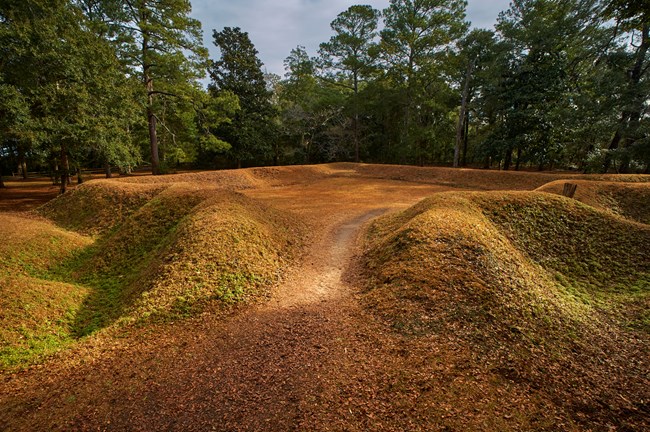
Hike The Freedom Or Thomas Hariot Trail At Fort Raleigh
If you want to get your history and your exercise there are some excellent hiking opportunities at Fort Raleigh. There’s the Freedom Trail which takes hikers through a maritime forest. It’s a 1.25-mile trail that ends with views of the Croatan Sound on the western edge of the park.
There’s also the Thomas Hariot Trail. It’s a 0.3-mile loop through the island’s maritime forest to the sandy shores of Albemarle Sound. Along the way hikers will see interpretive signs describing the forest habitat, the Algonquian methods for gathering food.
There’s also a reconstructed earthwork which includes copper nuggets, charcoal, antimony ore and furnace bricks. These could be the workshop site of Joachim Gans, a metal expert on the 1585 expedition.
And there’s the First Light of Freedom monument. It commemorates the Roanoke Island Freedman’s Colony that was set up during the American Civil War. The colony provided a safe haven and education for the formerly enslaved to help prepare them for a new life.
6. Carl Sandburg Home National Historic Site
We’re moving on to our #6 site which celebrates one of America’s greatest literary figures. At #6 on our list of the Best North Carolina Landmarks is the Carl Sandburg Home National Historic Site.
Most authors can only dream of winning a coveted Pulitzer Prize in literature. Carl Sandburg won three Pulitzer Prizes: two for his poetry and one for his biography of Abraham Lincoln.
During his lifetime, Sandburg was widely regarded as “a major figure in contemporary literature”, especially for volumes of his collected verse, including Chicago Poems (1916), Cornhuskers (1918), and Smoke and Steel (1920).
Sandburg’s Lincoln is regarded by many historians as the definitive biography of the man and his times. It is and always will be the “gold standard.”
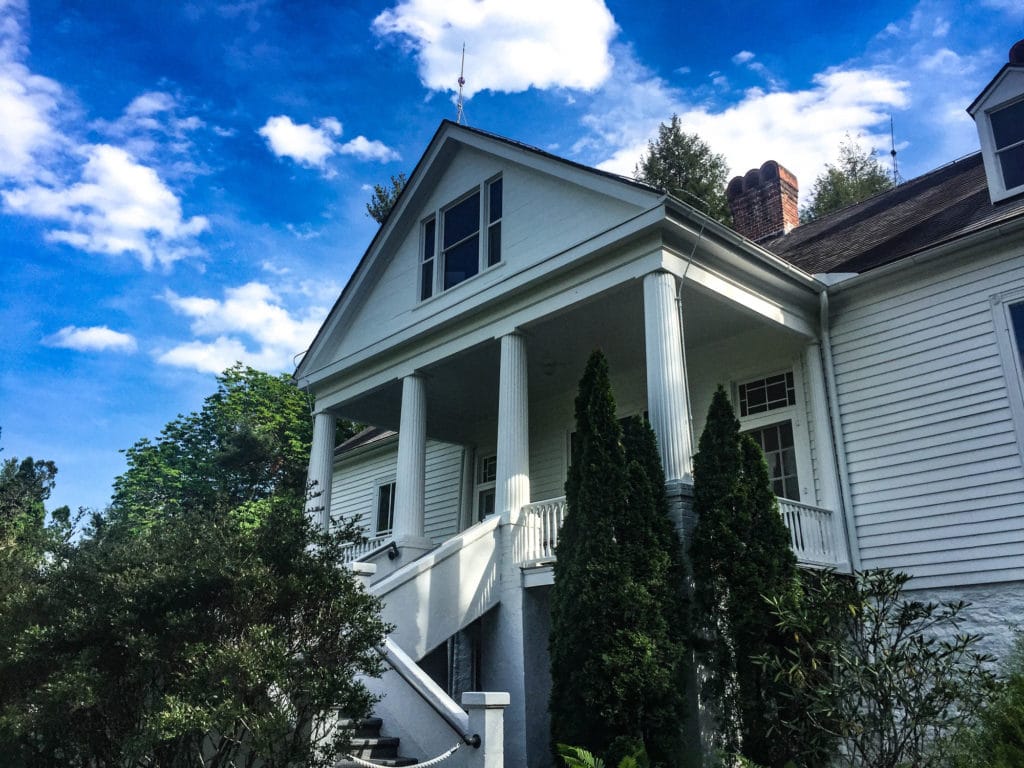
Things To See & Do
The park is located on 264 acres in western North Carolina. Visitors can tour the Sandburg Home They can also hike on over 5 miles of trails.
While there, you can visit the farm and dairy goats, and much more. The average visitor spends two hours at “Connemara.”
And the best news of all is that it’s free to enter the park, access the bookstore and information in the ground floor of the Sandburg Home, walk the trails and visit the barn. If you’re planning on touring the house there is a fee for that.
CHECK OUT: 10 BEST Civil War Sites In America
Top 5 North Carolina Landmarks
5. Cape Hatteras Lighthouse
We’re on to our Top 5 North Carolina landmarks. And we believe that we’ve saved the best for last!
The Cape Hatteras Lighthouse, located on Hatteras Island in the Outer Banks of North Carolina, is one of the most famous and iconic lighthouses in the United States. Its history is closely tied to the treacherous waters of the Diamond Shoals and the need for a reliable navigational aid in the area.
The original Cape Hatteras Lighthouse was constructed in 1803 under the direction of President Thomas Jefferson. It stood at a height of 90 feet (27 meters) and featured a fixed light fueled by whale oil. However, due to various reasons, including poor construction and erosion, the lighthouse proved to be inadequate in guiding ships safely along the coastline.
Over the years, the shifting sands and constant erosion threatened the stability of the original lighthouse. By the late 19th century, it became evident that a new lighthouse was necessary. In 1868, construction began on a replacement lighthouse approximately 1,500 feet (457 meters) inland from the original structure. The new lighthouse was designed by engineer Dexter Stetson and featured a height of 150 feet (46 meters).
Cape Hatteras In the 20th Century
However, even the new lighthouse faced the ongoing challenge of coastal erosion. By the early 20th century, the sea was encroaching dangerously close to the structure. In 1935, a decision was made to move the Cape Hatteras Lighthouse to a safer location. In a remarkable engineering feat, the entire 4,830-ton structure was lifted and moved approximately 2,900 feet (884 meters) inland over the course of 23 days.
The move successfully extended the lifespan of the lighthouse, but erosion remained a persistent issue. As a result, in 1999, the decision was made to move the lighthouse once again. This time, it was relocated 2,870 feet (875 meters) from its original position to a site further inland. The move was completed successfully, and the lighthouse reopened to the public in November 2000.
Today, the Cape Hatteras Lighthouse stands proudly at its new location, towering at a height of 198 feet (60 meters). It is characterized by its distinctive black and white spiral stripes, which serve as a recognizable navigational marker for mariners along the Atlantic Coast. The lighthouse is managed by the National Park Service and continues to attract visitors who come to admire its historic significance and enjoy the stunning views from the top.
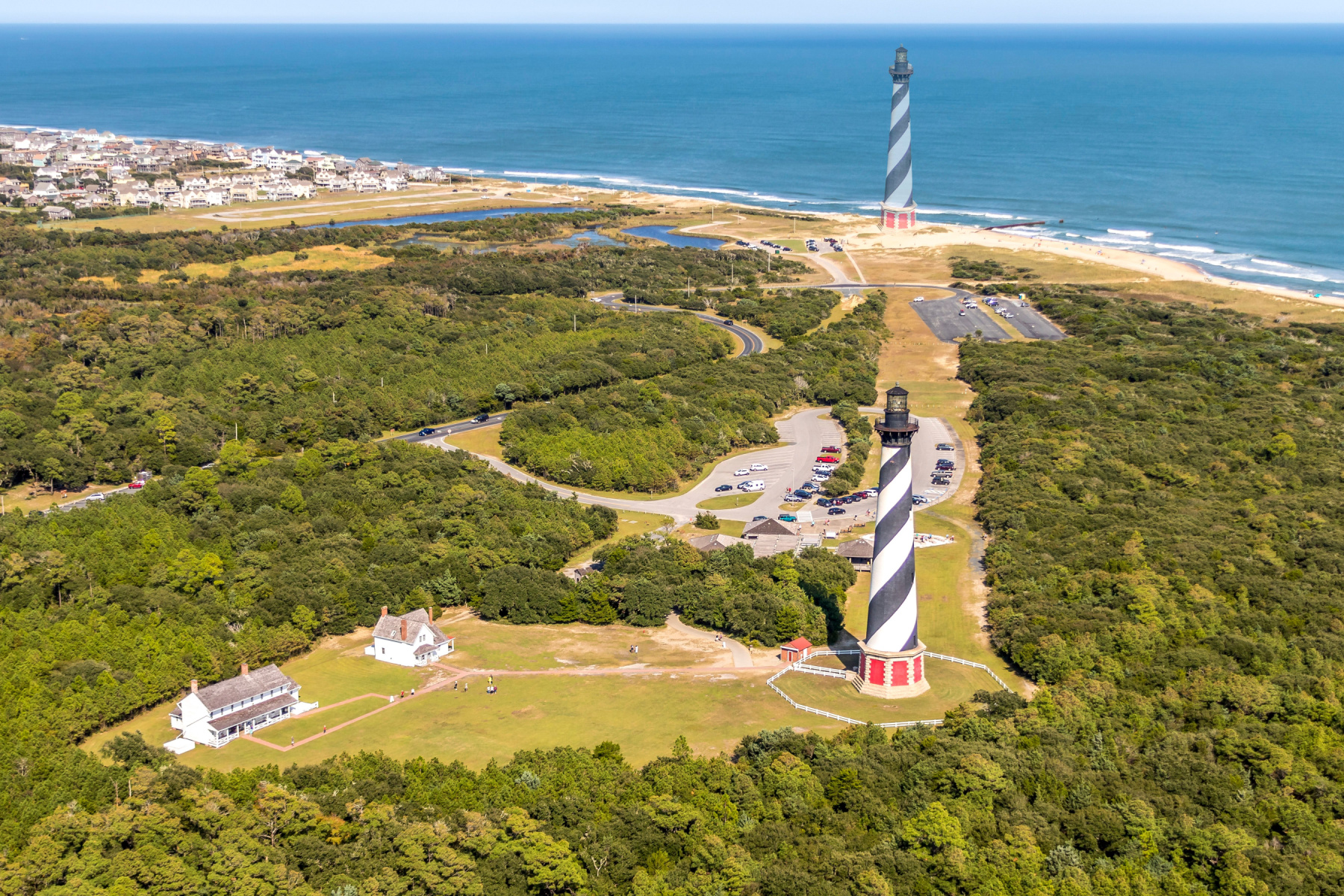
4. Guilford Courthouse National Military Park
We’re down to our final 4 historic sites which are both truly amazing places. At #4 is the Guilford Courthouse National Military Park which celebrates a pivotal battle of the American Revolutionary War.
The Battle of Guilford Courthouse was considered a victory within a defeat. It was on of the pivotal battles of the American Revolutionary War. It took place on March 15, 1781.
The British troops under Lieutenant General Charles Cornwallis (1738-1805) scored a tactical victory at Guilford Courthouse over American forces under Major General Nathanael Greene (1742-86). Nevertheless, the British suffered significant troop losses during the battle.
Afterward, Cornwallis abandoned his campaign for the Carolinas and instead took his army into Virginia, where in October of that year he surrendered to General George Washington (1732-99) following the Battle of Yorktown, the last major land battle of the war.
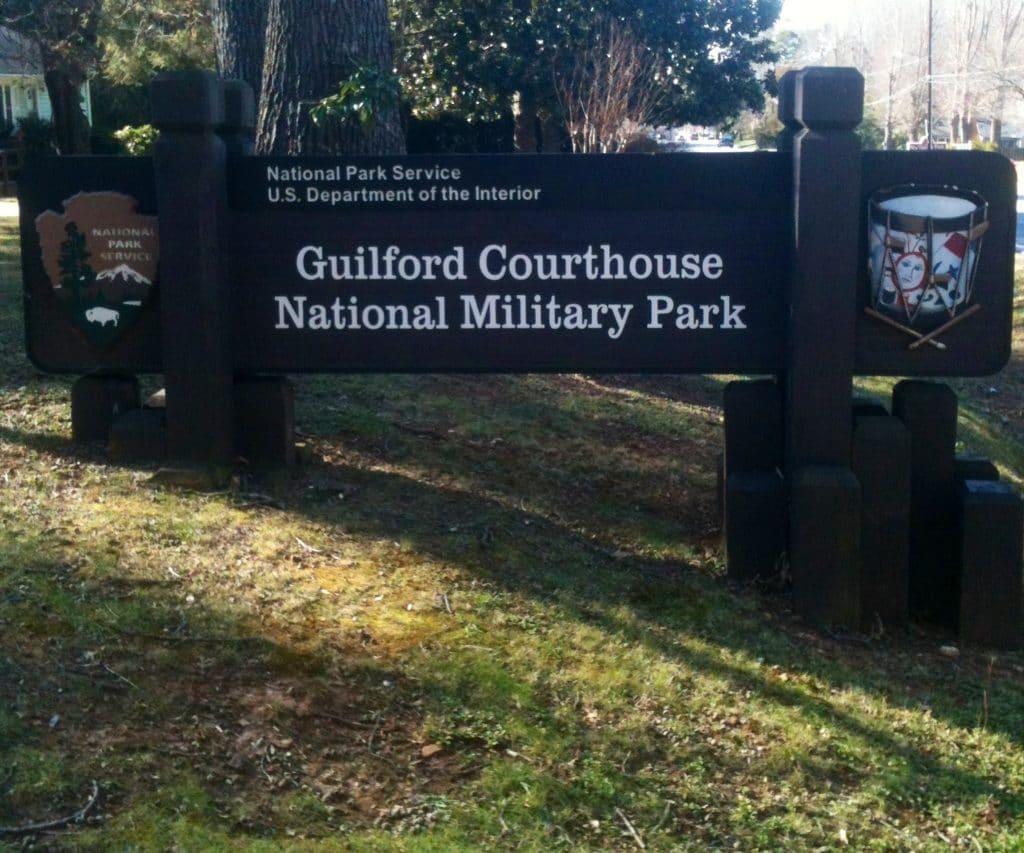
Things To Do
- Explore the Visitor Center: The Visitor Center at Guilford Courthouse National Military Park offers a wealth of information about the battle and the American Revolution. You can watch a short film, see exhibits, and talk to rangers to learn more about the park’s history.
- Take a guided tour: The park offers guided tours led by rangers or volunteers. These tours provide a more in-depth experience and allow you to learn more about the battle and its significance.
- Walk the battlefield trails: The park has several walking trails that allow you to explore the battlefield and see the key locations where the battle was fought. You can follow the trails at your own pace and stop to read interpretive signs along the way.
- Attend living history events: Throughout the year, the park hosts living history events that recreate aspects of life during the Revolutionary War. These events can include reenactments of the battle, demonstrations of colonial-era crafts, and talks by historians and authors.
- Visit the Hoskins Farm: The Hoskins Farm was the site of a crucial part of the battle and is now a historic farmstead within the park. You can tour the farmhouse, see the farm animals, and learn about daily life on a farm during the Revolutionary War.
- Attend special events: In addition to living history events, the park also hosts special events throughout the year, such as concerts, lectures, and book signings.
- Enjoy the park’s natural beauty: The park is home to a variety of wildlife and features beautiful landscapes. You can take a picnic, go birdwatching, or simply enjoy the peace and quiet of the natural surroundings.

3. Biltmore Estate
Our next North Carolina landmark was designed by architect Richard Morris Hunt and is America’s Largest Home® spanning 175,000 square feet, which is more than four acres of floor space. The 250-room French Renaissance chateau includes 35 bedrooms, 43 bathrooms, and 65 fireplace.
At #3 on our list of the Best North Carolina Landmarks is the Biltmore Estate in Asheville, North Carolina.

The History Of The Biltmore Estate
The Biltmore Estate, located near Asheville, North Carolina, is a grand and opulent mansion that holds a significant place in American architectural and cultural history. Its story begins with George Washington Vanderbilt II, a member of the prominent Vanderbilt family.
In the late 1880s, George Vanderbilt, inspired by his travels across Europe, decided to build a country retreat that would reflect the grandeur and elegance he had experienced. He selected a vast tract of land in the Blue Ridge Mountains and embarked on the construction of what would become the Biltmore Estate.
Architect Richard Morris Hunt was commissioned to design the house, and construction began in 1889. The Biltmore House, as it came to be known, was built in the Châteauesque style, combining elements of French Renaissance and Gothic architecture.
It features 250 rooms, including impressive reception halls, a banquet hall, a library, a bowling alley, and an indoor swimming pool, among others. The mansion also showcases an extensive collection of artwork, furniture, and decorative pieces sourced from around the world.
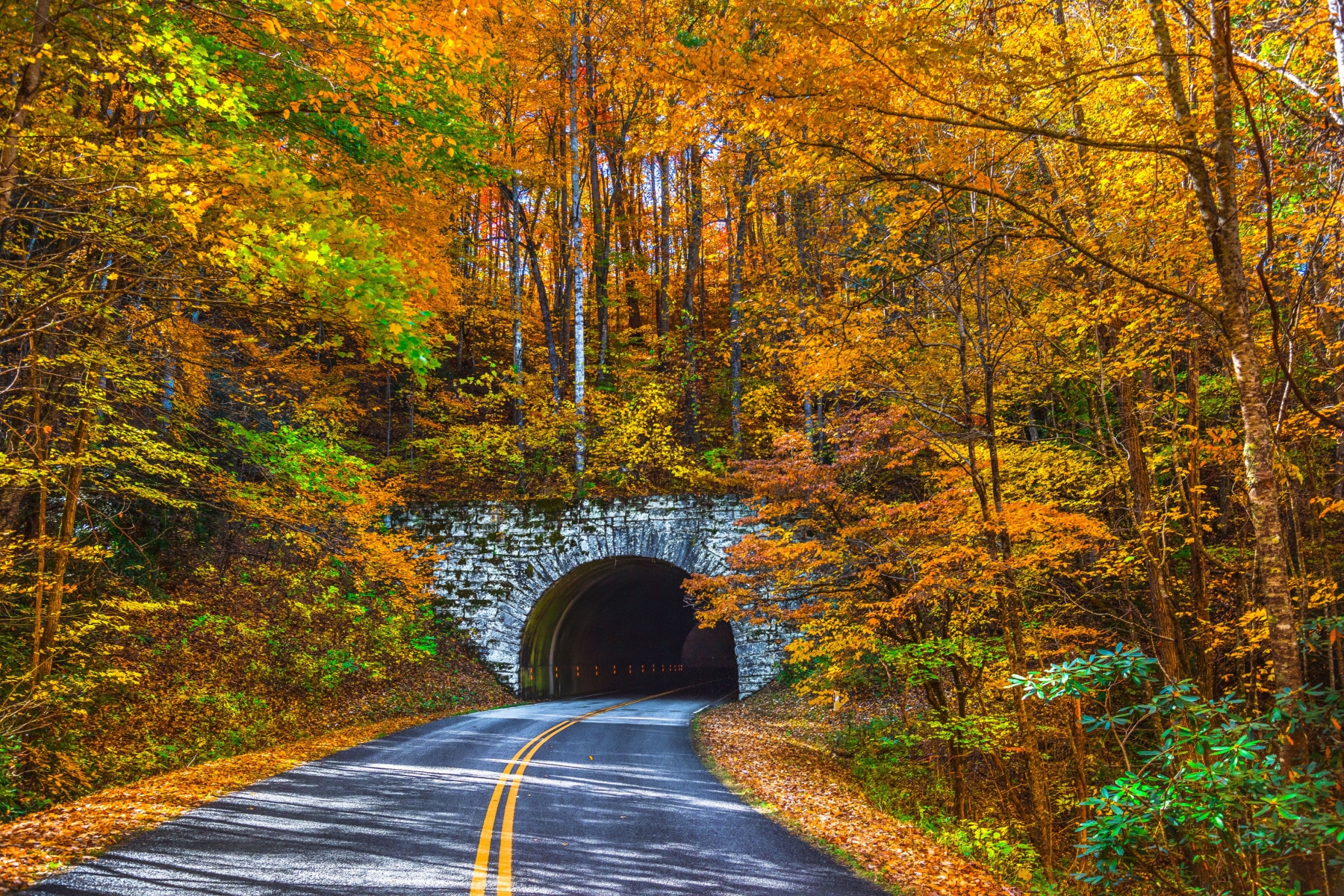
The Construction of Biltmore House
The construction of the Biltmore House involved a vast network of skilled craftsmen, including stonemasons, woodworkers, and landscapers. The estate’s landscape was designed by renowned architect Frederick Law Olmsted, known for his work on Central Park in New York City. Olmsted created stunning gardens, expansive lawns, and carefully planned vistas that complemented the grandeur of the mansion.
The Biltmore Estate was completed and opened to family and friends on Christmas Eve in 1895. George Vanderbilt entertained guests lavishly and used the estate as a private retreat for relaxation and cultural pursuits. The Biltmore House quickly gained attention as one of the most remarkable private residences in the country, showcasing unparalleled luxury and artistic splendor.
After George Vanderbilt’s death in 1914, his wife Edith continued to manage the estate. During World War II, the Biltmore Estate was closed to the public and used as a convalescent hospital for wounded soldiers. In 1930, Edith Vanderbilt opened the doors of the estate to the public, allowing visitors to experience the beauty and magnificence of the Biltmore firsthand.
The Biltmore Estate Today
Today, the Biltmore Estate remains in the Vanderbilt family and is a popular tourist destination. The mansion and its stunning gardens attract visitors from around the world who come to admire its architectural beauty, explore its vast grounds, and learn about the rich history and culture of the estate.
The Biltmore Estate stands as a testament to the Gilded Age and the vision of George Vanderbilt, leaving a lasting legacy as one of America’s most iconic and impressive architectural treasures.
2. Great Smoky Mountains National Park
We’re on to the final 2 North Carolina landmarks. Just because we’re More Than Just Parks doesn’t mean that we’ve forgotten about them however. In the runner-up position at #2 we selected Great Smoky Mountains National Park.
The Great Smoky Mountains National Park is the is the most visited national park in the country and a true monument to the beauty of the Appalachians. It’s the proverbial jewel in the crown known as North Carolina National Parks.
Established in the depths of the Great Depression by generous local communities, wealthy philanthropists like John D. Rockefeller Jr., and the U.S. government, this pristine area was spared from further logging and development and is now a premiere outdoor destination belonging to all Americans.

One Of The Most Beautiful Parks On The Planet
Nestled in the misty mountains of Tennessee and North Carolina, Great Smoky Mountains is easily one of the most beautiful national parks on the planet. If you don’t believe me, visit in the fall and you’ll see exactly what I’m talking about – more on that later!
If you’re wondering how crowded the park is considering it’s the most visited national park in the country – you might be surprised by the answer. While it certainly depends on where you go in the park and what time of year you visit, Great Smoky Mountains doesn’t see anywhere near the crowding that parks like Zion or Yosemite do these days.
To find out when, where, and why to go in this Appalachian wonderland – read on!
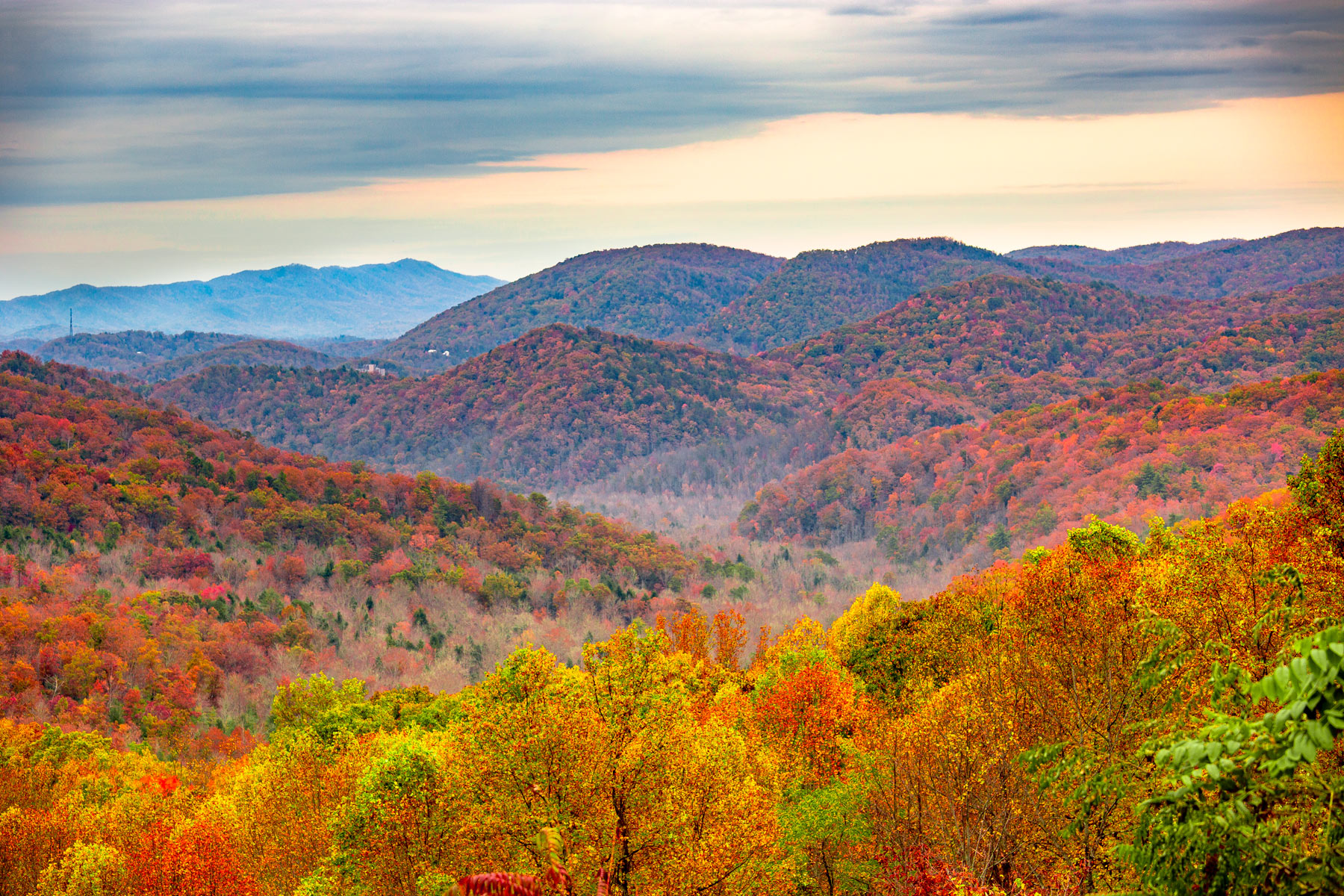
About Great Smoky Mountains
Nestled in the heart of the Southern Appalachian Mountains is a place where time seems to have stood still. Here are the last remains of the ancient forests that once dominated the Eastern United States.
In the words of President Franklin Roosevelt, “there are trees here that stood before our forefathers ever came to this continent; there are brooks that still run as clear as on the day the first pioneer cupped his hand and drank from them.”
These misty mountains are home to America’s most visited national park, a land of vast hardwood forests, clear mountain streams, frontier cabins, and iconic wildlife. This is Great Smoky Mountains National Park.
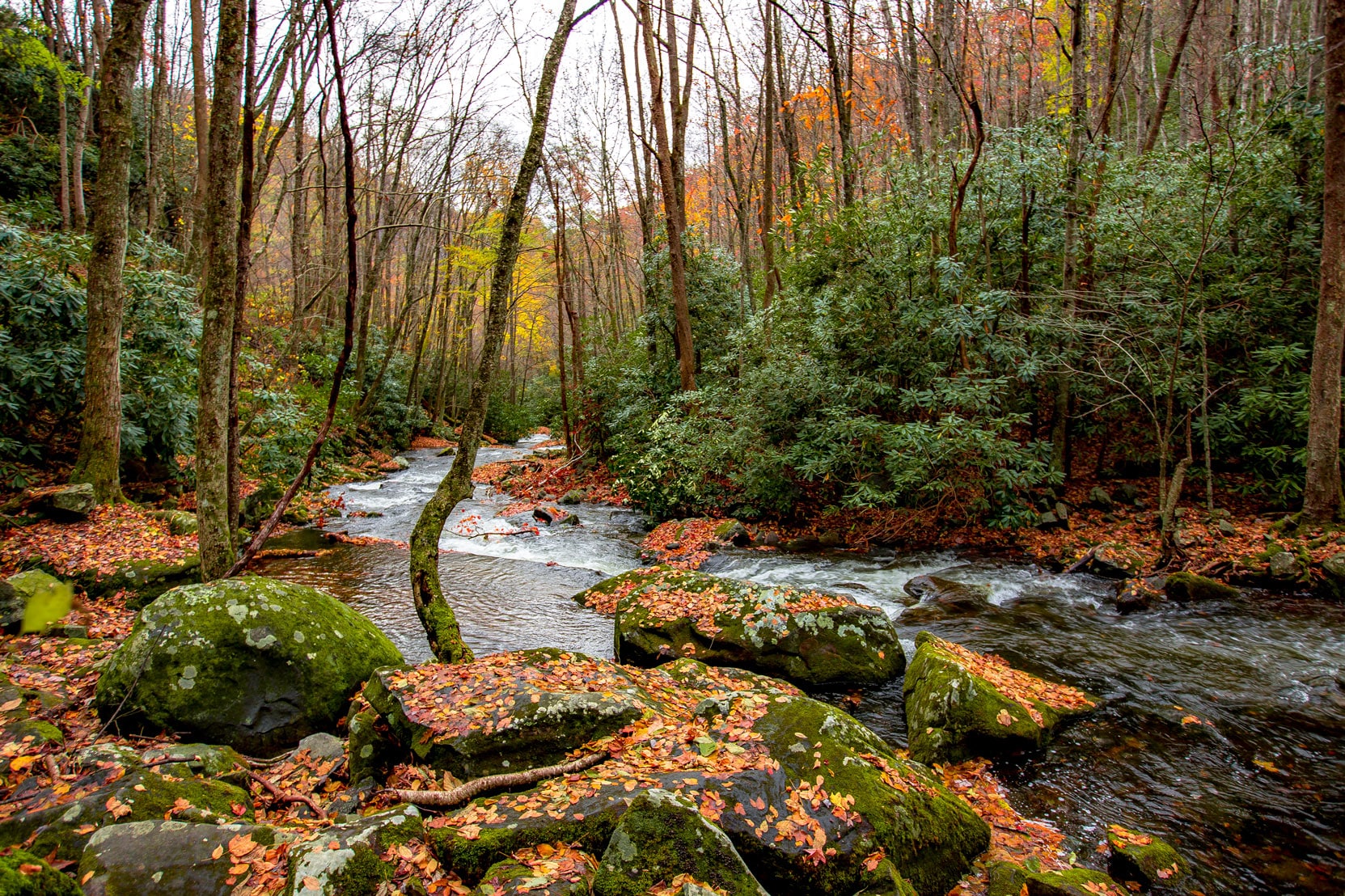
Watch Our Award-Winning Great Smoky Mountains Video
This video is the culmination of two weeks exploring Great Smoky Mountains National Park. More Than Just Parks chose Great Smoky Mountains as our second park because of it’s extraordinary display of fall colors, it’s incredibly diverse wildlife population, and it’s importance as the most visited national park in the country.
Be sure to heck out our article: 15 Incredible Things to Do at Great Smoky Mountains National Park
1. Wright Brothers National Memorial
Drumroll please! More Than Just Parks has selected as the #1 North Carolina Landmark The Wright Brothers National Memorial. Two wrongs don’t make a right, but two Wrights made an airplane which revolutionized the history of aviation.
On December 17, 1903, Orville & Wilbur Wright, otherwise known as the Wright Brothers, ushered in the aerial age with their successful first flight of a heavier-than-flying machine at Kitty Hawk, North Carolina.
This airplane, known as the Wright Flyer, was the product of a sophisticated four-year program of research and development conducted by the brothers beginning in 1899.
Together, these two aeronautical visionaries pioneered many of the basic tenets and techniques of modern aeronautical engineering, such as the use of a wind tunnel and flight testing as design tools.
The impact of the airplane on the 20th century is beyond measure. The Wrights not only solved a long-studied technical problem, but also helped create an entirely new world.
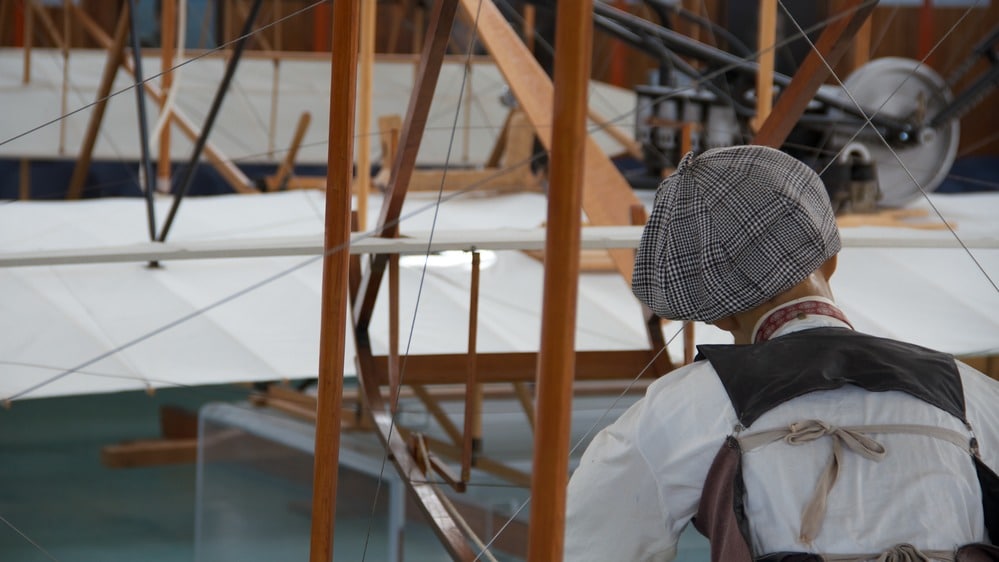
The desire to fly is an idea handed down to us by our ancestors who, in their grueling travels across trackless lands in prehistoric times, looked enviously on the birds soaring freely through.”
-Orville Wright
Things To Do & See At The Wright Brothers National Memorial
- Visit the Visitor Center: The Visitor Center at the Wright Brothers National Memorial has exhibits and artifacts that tell the story of the Wright Brothers and their achievements. There is also a bookstore and a theater that shows a film about the Wright Brothers’ historic flight.
- See the First Flight Boulder: The First Flight Boulder marks the spot where the Wright Brothers took off on their first powered flight on December 17, 1903. It is located near the Visitor Center and is a popular spot for photos.
- Walk the Flight Line: The Flight Line is a path that follows the course of the Wright Brothers’ first four flights. Along the way, there are markers that indicate where each flight took off and landed. You can walk the Flight Line and imagine what it must have been like for the Wright Brothers to take to the air for the first time.
- Climb the Wright Brothers Memorial: The Wright Brothers Memorial is a 60-foot-tall granite monument that honors the Wright Brothers’ achievements. Visitors can climb to the top of the monument for a stunning view of the surrounding area.
- Attend a Ranger Talk: The park rangers at the Wright Brothers National Memorial offer talks and demonstrations throughout the day. These talks cover a variety of topics, from the science of flight to the history of the Wright Brothers’ accomplishments.
- Explore the Outer Banks: The Wright Brothers National Memorial is located on the Outer Banks of North Carolina, a beautiful area with miles of beaches, wildlife refuges, and historic lighthouses. Take some time to explore the area and enjoy the natural beauty of the coast.
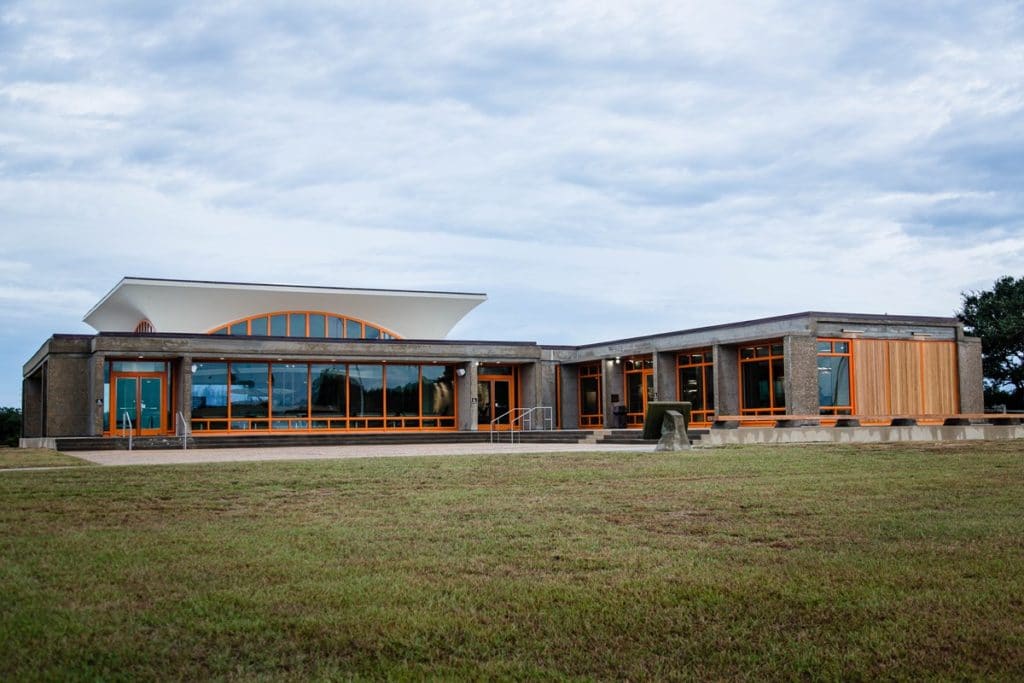
Map Of North Carolina Landmarks
List Of North Carolina Landmarks
- Wright Brothers National Memorial
- Great Smoky Mountains National Park
- Biltmore Estate
- Guilford Courthouse National Military Park
- Cape Hatteras Lighthouse
- Carl Sandburg Home National Historic Site
- Fort Raleigh National Historic Site
- Overmountain Victory National Historic Trail
- The International Civil Rights Center & Museum, Greensboro
- USS North Carolina Battleship Memorial
- The Thomas Wolfe Memorial
- Charlotte Hawkins Brown Museum
- Fort Fisher
- Reed Gold Mine
- Tryon Palace
Why Trust Us About North Carolina Landmarks?
We’re Jim Pattiz and Will Pattiz, collectively known as the Pattiz Brothers and we absolutely LOVE the national parks.
You should probably know that we don’t just make this stuff up out of thin air. We’ve spent our entire adult lives exploring and filming America’s national parks and public lands.
We’ve worked with the National Park Service, the Department of Interior, USDA, U.S. Forest Service, and more for years creating films on important places and issues. Our work has been featured in leading publications all over the world and even some people outside of our immediate family call us experts on the national parks.
And, in 2018, our father – having spent a lifetime teaching history – joined us so that he could help us to tell the stories behind these amazing places.
Meet The Parks Brothers
We Hope You’ll Follow Our Journey

Our goal here at More Than Just Parks is to share the beauty of America’s national parks and public lands through stunning short films in an effort to get Americans and the world to see the true value in land conservation.
We hope you’ll follow our journey through the parks and help us to keep them the incredible places that they are. If you’re interested in joining the adventure then sign up below!

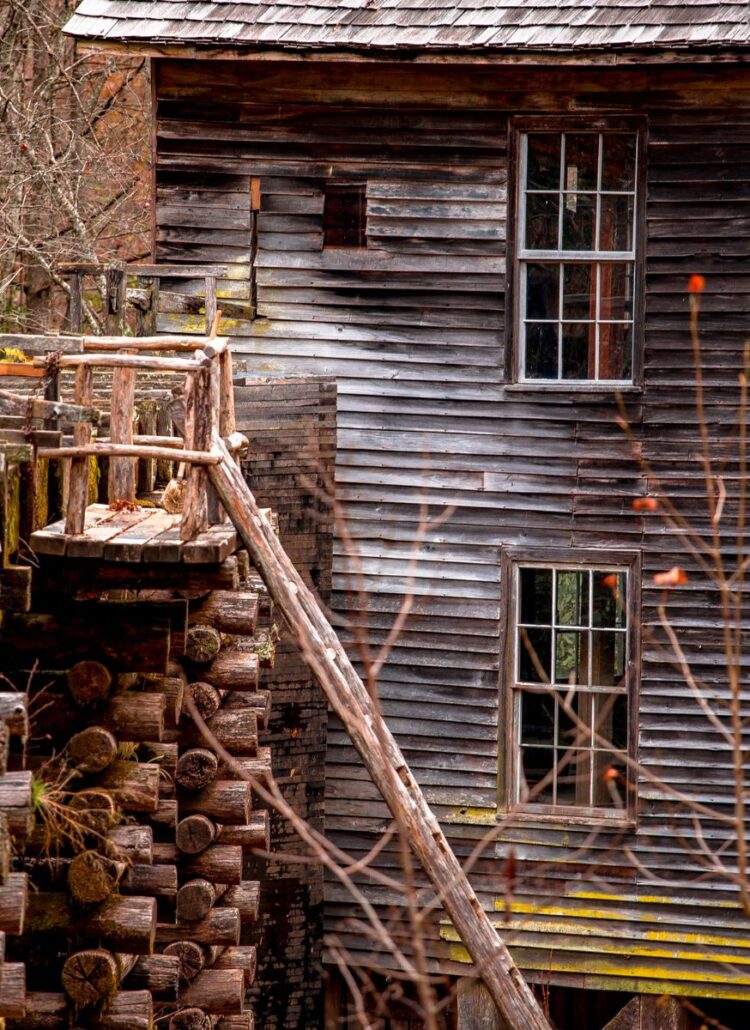

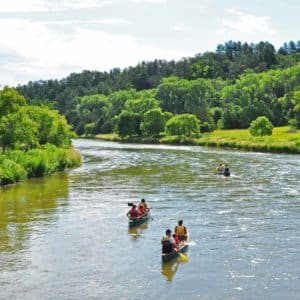

Leave a Reply